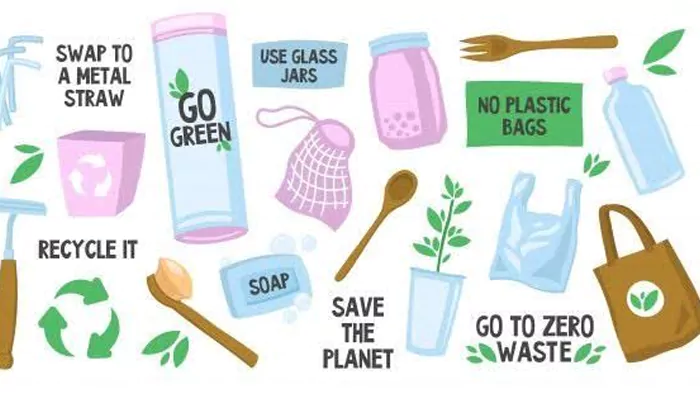Summer 2024 Hottest Since 1850: Tracking The Extreme Weather Events That We Saw This Season
- Sayan Paul
- 1 year ago
- 5 minutes read
This year's summer (Northern Hemisphere) beat the previous record set in 2023, becoming the hottest since 1850.
Climate change is real - and it's getting just worse with each passing year. And with the boost from El Niño, a complex weather pattern, the situation has been alarming in the past couple of years, breaking temperature records and wreaking havoc on lives. According to The Copernicus Climate Change Service (C3S), the summer of 2024 (June to August) was the hottest for the Northern Hemisphere since 1850.
The meteorological summer this year in the Northern Hemisphere averaged 16.8 degrees Celsius - 0.03 degrees Celsius warmer than the previous record set in 2023. Also, C3S deputy director Samantha Burgess revealed in a statement that this season experienced everything from the hottest day on record to the hottest boreal summer and more. She added that the situation "will only become more intense" unless the world reduces greenhouse emissions.

As it goes without saying, these are not just in papers but are very apparent right before our eyes. This summer, we have already seen several extreme weather events across the world, affecting the lives of millions. In this article, let's have a look at some of them.
Extreme Droughts in Sicily & Sardinia
Sicily and Sardinia are two of the largest Italian islands and are known for their agriculture and tourism sectors. However, due to extremely high temperatures for the past several months, and subsequently a lack of rainfall, the two islands have been experiencing disastrous droughts - described as the worst in 20 years. World Weather Attribution scientists revealed in a statement that "persistent heat that evaporates water from soils, plants, and reservoirs is driving the rise in drought risk".
Over the last year, drought levels in Sicily and Sardinia have worsened!
— EU_ScienceHub (@EU_ScienceHub) September 5, 2024
These severe conditions are mainly driven by the strong increase in temperatures caused by climate change.
Read the @WWAttribution's study, with contributions by our scientists https://t.co/CoyPzS9ewl pic.twitter.com/l3OULdOTPR
Credit: EU_ScienceHub
A state of emergency was declared in Sicily in May, and in Sardinia in July. Reports suggest that reservoirs there are currently running dry, while all the planted fields have been lost. A report by Agence France-Presse suggests that the damages here have already surpassed an estimated 2.7 billion euros this year.
Typhoon Gaemi in the Philippines, Taiwan, & China
In late July, Typhoon Gaemi emerged in the Philippines, Taiwan, and East China, leading to widespread devastation, and claiming hundreds of lives.
It formed as a tropical depression east of Palau, intensified shortly after, and then turned north-northwestward. It strengthened into a tropical storm in the Philippines, affecting at least 6.5 million people. Then, it achieved Category 4 status while approaching Taiwan, resulting in prolonged landfall. A slightly weakened version came in East China.
With up to 1,700+ mm (~70 in.) of rain recorded in #Taiwan, Typhoon #Gaemi has broken into the top ten list of the most waterlogged cyclones ever to strike the island, dropping 1.7 billion tons of water into local reservoirs. Combined with the torrential rains in the… pic.twitter.com/CuvsIJHcP0
— Backpirch Weather (@BackpirchCrew) July 26, 2024
Credit: Backpirch Weather
A study by the World Weather Attribution (WWA) found that Typhoon Gaemi "happened due to global climate change". According to scientists, the frequency of these storms has increased by 30 percent, while their maximum speed has increased by almost 7 percent.
Emergency measures activated in China as Typhoon #Gaemi brings heavy rain pic.twitter.com/rjkB0d5g9g
— CGTN (@CGTNOfficial) July 28, 2024
Credit: CGTN
Notably, another typhoon, Shanshan, made landfall in Japan on August 28, 2024.
Flooding in Sudan
Due to the unusual changes in climate patterns this year, Sudan experienced torrential rainfall recently, leading to a flood across the country.
According to the Sudan Floods Dashboard, an estimated 491,100 people in 63 localities across 15 states in Sudan have been severely affected. Around 69 people have been killed, 112 people have been injured, 35,518 homes have been destroyed, and an estimated 143,200 people have been displaced.

What's even worse is that there's an outbreak of cholera (due to contaminated waters), claiming the lives of many. According to the Sudan Federal Ministry of Health (FMoH), about 2,900 cases of cholera have been reported from July 22 to September 1, 2024, with a case fatality rate (CFR) of 3.9 percent from five states.
Heavy rains and torrential floods in Sudan's Red Sea State led to the collapse of the Arbaat Dam, located 40 km north of Port Sudan, which is the city's main source of drinking water. pic.twitter.com/VPnSWj5fKt
— Volcaholic 🌋 (@volcaholic1) August 25, 2024
Credit: Volcaholic
The list includes many more – from droughts in Iran to heatwaves in North India to the Amazon wildfire. And given the continuous greenhouse emissions and all, what lies ahead seems even more disastrous. As Burgess said in her statement, "The temperature-related extreme events witnessed this summer will only become more intense, with more devastating consequences for people and the planet unless we take urgent action to reduce greenhouse gas emissions."












